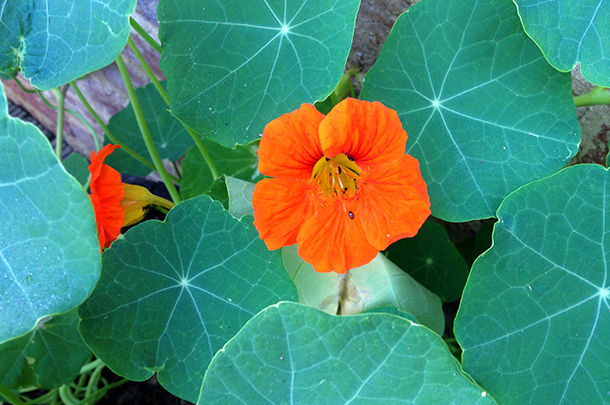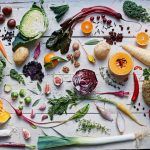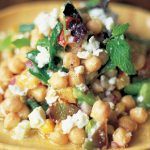I firmly believe that outdoor dining is one of life’s great pleasures. A couple of years after I started gardening for a living I realised that my internal thermostat had been permanently recalibrated, presumably thanks to spending every waking moment outdoors. Everyone’s house seemed too warm, even in winter, so it feels acceptable to have picnics all year round. Even I will grudgingly concede, however, that summer is really the best time to do it.
Growing your own food adds an extra dimension to the experience. While doubtless it’d be lovely to stretch out a languid arm to pluck grapes from the ancient vine shading the table, frankly I feel pretty chuffed cutting salad leaves from the trough by the back door or getting a handful of raspberries to scatter over ice cream. Feeding people is always lovely, but if you’ve grown some of the ingredients yourself, the pride makes that pleasure greater still.

Thyme
I normally talk about fruit and veg in these pages, but believe it or not there are a whole host of edible flowers out there too: you might even be able to raid the flowerbed as you picnic on the lawn. In summer, salads are very much to the fore, so try adding some blooms to the bowl for the colour, fragrance and, in some cases, flavour they bring.
Caveat time: do make sure of your identification, as not all flowers are edible (although it’s hard to go wrong with ones I include here). Unless they are very small, in general only the petals are eaten. Flowers of the common culinary herbs can be eaten whole but their flavour is strong, so use them sparingly. It’s best to pick any flower at the last minute because they wilt quickly, and always taste them before adding to your food, because even edibles can sometimes be bitter or overpowering.
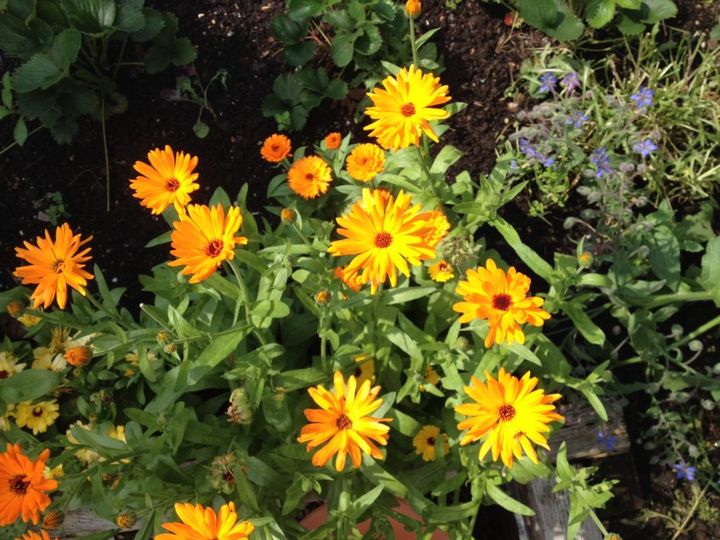
Marigold
Pot marigold Calendula officinalis, Signet marigold Tagetes tenuifolia, Nasturtium Tropaeolum majus and Borage Borago officinalis are well known friends of the vegetable gardener, since all attract insects that are beneficial to crops. Both marigolds contribute a bright splash of orange to any green salad (though my friend Karen also sets them in fudge, to striking effect). The flowers and miniature lily-pad leaves of Nasturtium have a nice peppery taste, and the seeds can be pickled like capers. The flowers of Borage are like little blue stars. When I was little, my mother used to set them in ice cubes and pop them in my lemonade. I’ve since discovered that they will float equally well in gin and vodka-based drinks, as well as in Pimm’s. Historically, they were added to cups of wine as a herbal pick-me-up.
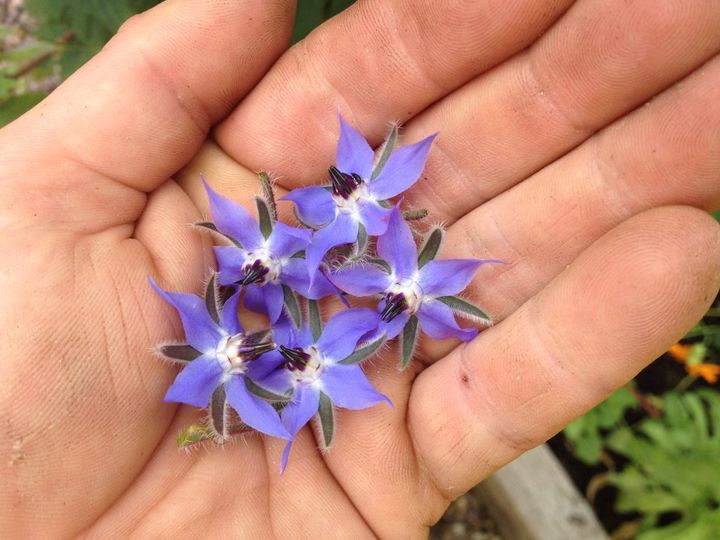
Borage
Other common edibles include the lawn daisy, roses, day lily (Hemerocallis spp. – these can be stuffed and cooked), hollyhock (flowers and cooked buds), primrose, viola and pansy. Pansies are a staple of winter bedding, so if you catch the edible-flower bug this summer you’ll be pleased to know that there are even some with which you can grace your winter salads. Chrysanthemum flowers are edible but may need blanching first. The leaves of ‘Chrysanthemum greens’ or “Shungiku” are a popular salad ingredient and steamed green in Asia.

Daylillies
On the vegetable patch, chicories, salsify and scorzonera all produce attractive and palatable flowers in their second year. Chive flowers impart a mild onion flavour, but those of onions and garlic themselves are a bit overpowering. Broad beans, runner beans and pea blooms have a delicate leguminous taste, but avoid the decorative sweet pea flower, which is toxic. Fennel is aniseedy and all brassica flowers can be eaten – my favourite being rocket, which is peppery rather than cabbagey – and has a discernible sweetness due to the pollen and nectar it contains.
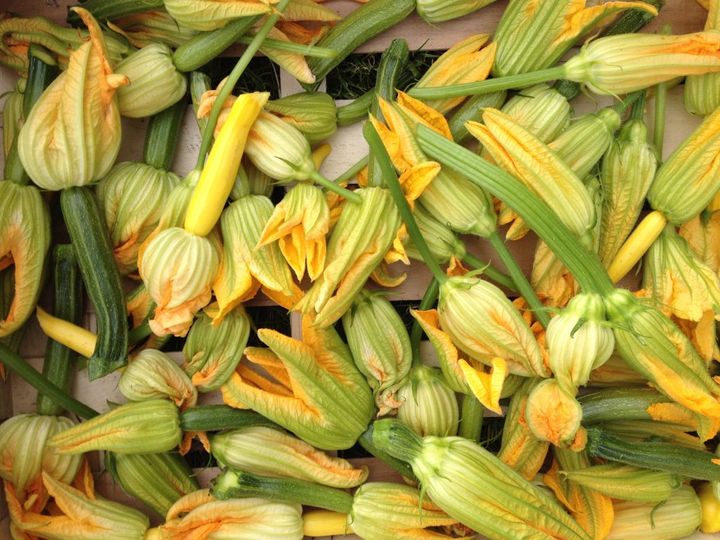
Courgette flowers
Great fun can be had with courgette flowers, which can be stuffed, dipped in tempura batter and fried. Both male and female flowers can be eaten, though the latter, identified by the presence of an immature courgette at the base, are better simply because there is more to eat. It’s a little fiddly to do but a real show-stopper that’s worth the effort. It’s also a superb way to keep on top of the inevitable courgette glut that comes at this time of year.

Get foraging – we’d love to see photos of your flowery food this summer.
